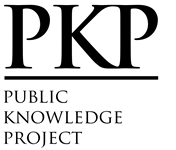Potential bioactive compounds found in three different Insect species (Periplaneta americana, Chrysomya megacephala, Oxya serville): Steroids and protein content
Abstract
Cockroaches, houseflies and green locusts are three types of insects that are available around us, and even their presence tends to be a carrier of disease (host) and pests in agriculture. Based on these conditions, it is necessary to conduct an initial study of the potential bioactive compounds contained in the three types of insects, especially steroid and protein content as candidates for ‘ecdysteroids’ for crab moulting stimulants, as well as their social and economic potential. This research is qualitative with the following stages: i) insect collection using traps, ii) insect extraction, iii) chemical compound testing of insect extracts, and iv) proximate testing. The results showed that the insect animals tested were cockroaches, flies, and adult grasshoppers, and they were positive for steroid compounds tested using the Liebermann-Burchard method. From the results of the proximate test, the three insect animals have crude protein (%) 32.5 for cockroaches, 33.5 for flies, and 30.5 for grasshoppers. From a social perspective, utilising these animals will reduce disease-carrying hosts in the community. Economically, it will impact the emergence of a business chain in the supplier segment.
Keywords: Aquaculture; Insects; Moulting; Protein; Steroid
Full Text:
PDFReferences
Agustien, G.S., dan Susanti. 2021. Pengaruh jenis pelarut terhadap hasil ekstraksidaun lidah mertua (Sansevieria trifasciata). Prosiding. Seminar Nasional Farmasi UAD. Hal 39-45. ISBN: 978-623-5635-06-4.
Calcagno, M.P., Camps, F., Coll, J., Mele´ E., and Sa´nchez-Baeza, F. 1995. A new family of phytoecdysteroids isolated from aerial part of ajuga reptans var. atropurpurea. Tetrahedron, 51, 12119–12126.
Calcagno, M.P., Camps, F., Coll, J., Mele´ E., and Sa´nchez-Baeza, F. 1996. New phytoec-dysteroids from roots of ajuga reptans varieties. Tetrahedron, 52, 10137–10146.
Engelmann, F. 2002. Ecdysteroids, juvenile hormone and vitellogenesis in the cockroach Leucophaea maderae. Journal of Insect Science, 2:20, 8 pp.
Fujaya, Y., Aslamsyah, S., dan Usman, Z. 2011. Respon molting, pertumbuhan dan mortalitas kepiting bakau (Scylla serrata) yang disuplementasi vitomolt melalui injeksi dan pakan buatan. J. Ilmu Kelautan, 16 (4): 211-218.
Habibi, M.W., Hariani, D., dan Kuswanti, N. 2013. Perbedaan lama waktu moulting kepiting bakau (Scylla serrata) jantan dengan metode mutilasi dan ablasi. LenteraBio, 2 (3), 265–270.
Lafont, R., Dauphin, V.C., Warren, J.T., and Rees, H. 2012. Insect endocrinology: ecdysteroid chemistry and biochemistry. Academic Press. Pages 106–176.
Kamiyama, T., and Niwa, R. 2021. Ecdysteroids in handbook of hormones (second edition). comparative endocrinology for basic and clinical research. 2: Pages 981-982.
Kovitvadhi, A., Thongprajukaew, K., Tirawattanawanich, C., Srikachar, S., andChotimanothum, B. 2019. Potential of insect meals as protein sources for meat-type ducks based on in vitro digestibility. Animals, 9, 155.
Kopec, S. 1922. Studies on the necessity of the brain for the inception of insect metamorphosis. Biol. Bull., 42, 323–342.
Muza`ki, K.A., Warsidah., dan Nurdiansyah, S.I. 2022. Analisis kandungan proksimat kerang ale-ale (Meretrix sp.) segar dan fermentasi. E-jurnal kimia khatulistiwa, JKK, 10(1): 26-34.
Niwa, R., and Niwa, Y.S. 2014. Enzymes for ecdysteroid biosynthesis: their biological functions in insects and beyond. Bioscience, Biotechnology, and Biochemistry, 78(8): 1283–1292.
Nguyen, N.T.B., Wantiez, L., Lemaire, P., and Chim, L. 2022. Feed efficiency, tissue growth and energy budget changes during the molting cycle of juvenile mud crab, scylla serrata: effects of dietary proteins, fishmeal versus soy protein concentrate. Journals Fishes, 7 (6), 334.jmg.
Tamsil, A., and Hasnidar, H. 2018. The effect of molting hormone (20- hydroxyecdysone) on molting of mud crab (Scylla olivacea Herbst, 1976). Ecology, Environment and Conservation, 24, 960– 967.
Xu, H., Han, T., Li, X., Wang, J., Zheng, P., Yin, F., and Wang, C. 2020. Effects of dietary lipid levels on survival, growth performance, and antioxidant ability of the early juvenile Scylla paramamosain. Aquaculture, 528.
Zhou, Y., Wang, D., Zhou, S., Duan, H., Guo, J., and Yan, W. 2022. Nutritional composition, health benefits, and application value of edible insects: A Review. Foods, 11(24): 3961.
DOI: https://doi.org/10.29103/aa.v11i3.11910
 Article Metrics
Article Metrics
 Abstract Views : 216 times
Abstract Views : 216 times
Refbacks
- There are currently no refbacks.
Copyright (c) Acta Aquatica: Aquatic Sciences Journal

This work is licensed under a Creative Commons Attribution 4.0 International License.









